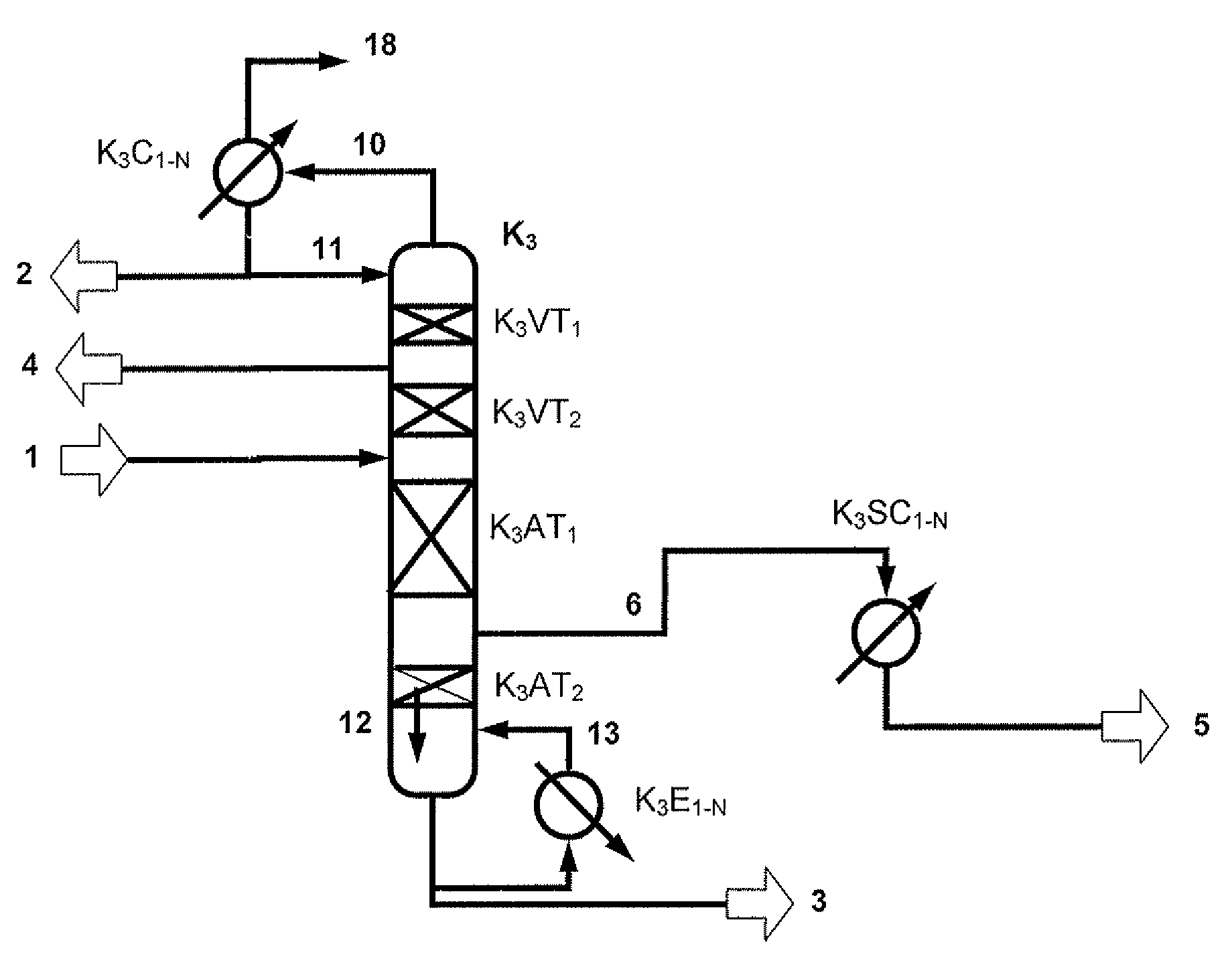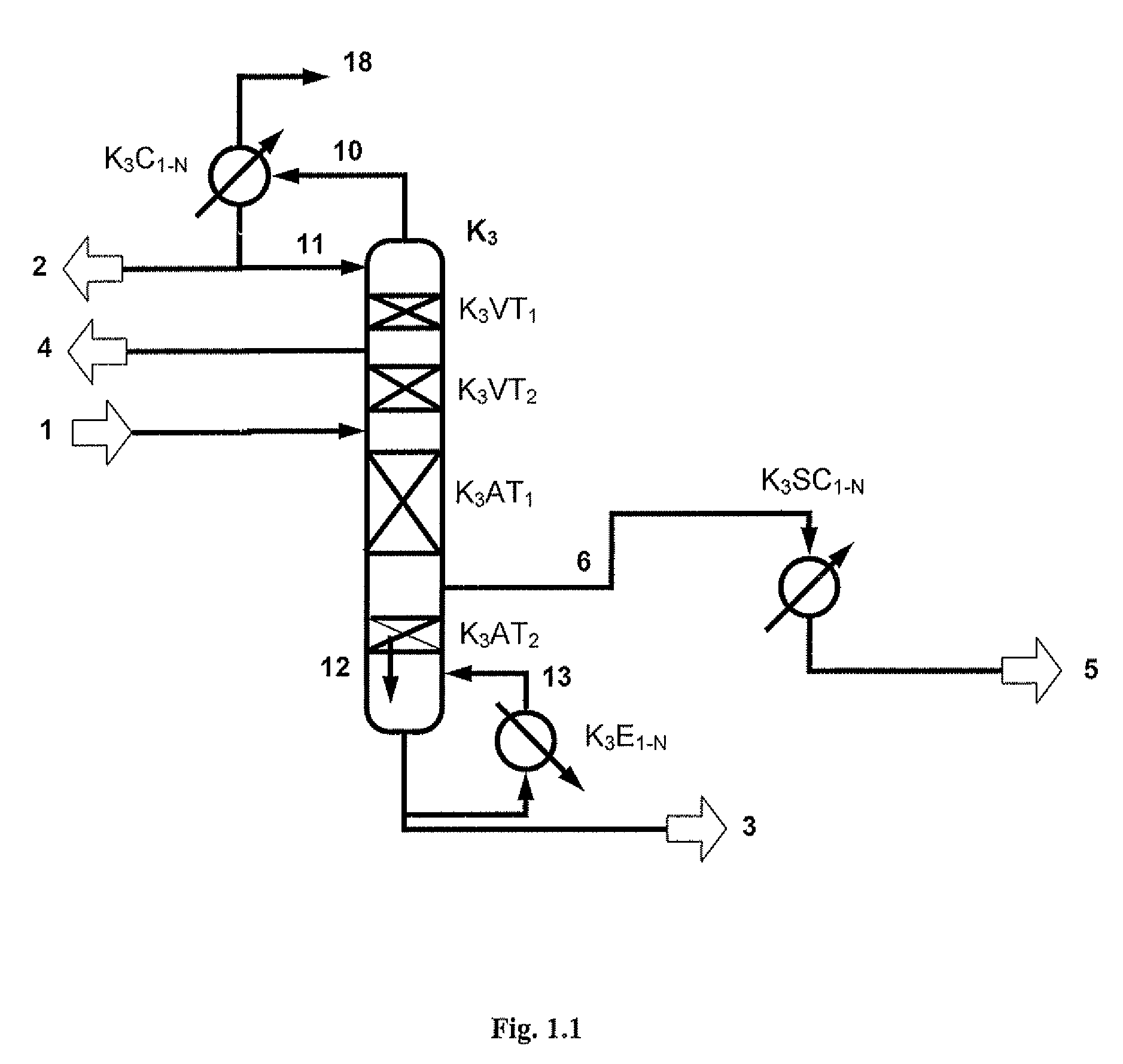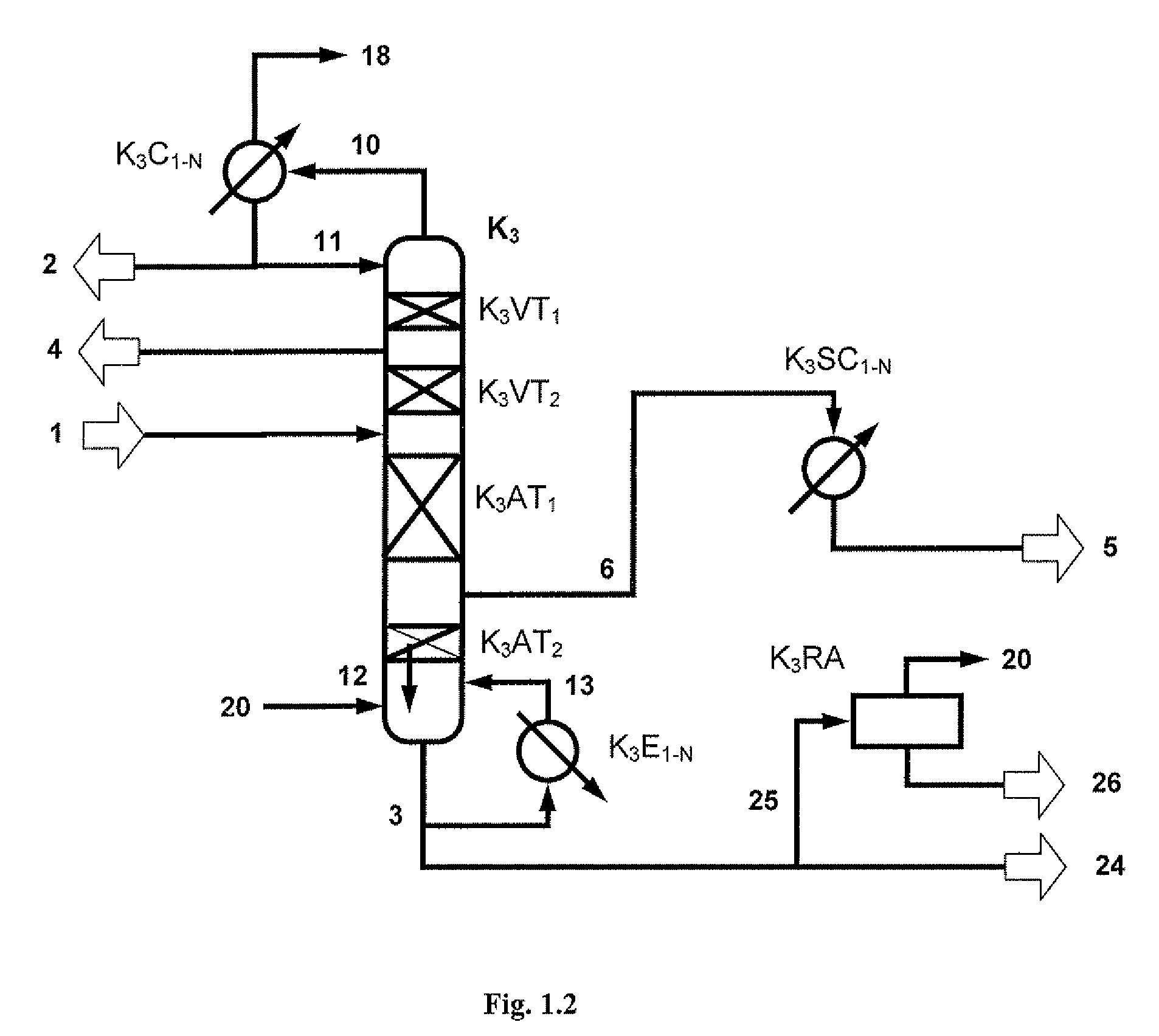Processes for purifying diaryl carbonates
- Summary
- Abstract
- Description
- Claims
- Application Information
AI Technical Summary
Benefits of technology
Problems solved by technology
Method used
Image
Examples
example 1
DPC Purification in a First Distillation Column (Fine Distillation) with Sidestream Column According to FIG. 2.1
[0173]A two-stage transesterification affords 224.4 kg / h of a DPC-containing stream comprising 63.8 / 22.7 / 10.3 / 0.4 / 2.7 / 0.08% by weight of DPC / MPC / phenol / DMC / Ti(PhO)4 / salol. This stream is worked up in a distillative refinery composed of a first distillation column (fine distillation) with vaporous sidestream withdrawal (K3) and a sidestream column (K4) according to FIG. 2.1. In addition, 1.3 kg / h of a vaporous mixture from a residue concentration comprising 99.6% by weight of DPC are fed in at the bottom of the column K3.
[0174]The fine distillation (K3) consists of four sections, an upper rectifying section with 2 theoretical plates, a lower rectifying section with 12 theoretical plates, an upper stripping section with 10 theoretical plates and a lower stripping section with 9 theoretical plates. The condensation of the vapors emerging at the top of the column in the top co...
example 2
DPC Purification in a Dividing Wall Column with Liquid Sidestream Withdrawal
[0181]For this example, a dividing wall column according to FIG. 3.1 is used. The dividing wall column K3 consists of a rectifying section with 2 sections. The upper section K3VT1 has a separating performance of 2 theoretical plates, the section K3VT2 below it a separating performance of 12 theoretical plates. Below the upper rectifying section K3VT1 there is the possibility of withdrawing a liquid stream (4) to discharge diphenyl ether.
[0182]Below the rectifying section, the column is partitioned by a vertical dividing wall T. On the withdrawal side and feed side of this dividing wall are in each case disposed at least 2 sections. The feed (1) is introduced on the feed side of the dividing wall. A liquid withdrawal of the purified diphenyl carbonate (5) is effected on the withdrawal side.
[0183]The upper section K3TLO disposed on the feed side of the dividing wall serves for the removal of high boilers which...
example 3
DPC Purification in a Dividing Wall Column with Vaporous Sidestream Withdrawal
[0190]For this example, a dividing wall column according to FIG. 3.2 is used. The dividing wall column K3 consists of a rectifying section with 2 sections. The upper section K3VT1 has a separating performance of 2 theoretical plates, the section K3VT2
[0191]below it a separating performance of 13 theoretical plates. Below the upper rectifying section K3VT1, there is the possibility of withdrawing a liquid stream (4) to discharge diphenyl ether.
[0192]Below the rectifying section, the column is partitioned by a vertical dividing wall T. On the feed side and the withdrawal side of this dividing wall are in each case disposed at least 2 sections. On the feed side of the dividing wall, the feed (1) is introduced. On the withdrawal side, there is a vaporous withdrawal of the purified diphenyl carbonate (6).
[0193]The upper section K3TLO disposed on the feed side of the dividing wall serves for the removal of high...
PUM
| Property | Measurement | Unit |
|---|---|---|
| Fraction | aaaaa | aaaaa |
| Diameter | aaaaa | aaaaa |
| Boiling point | aaaaa | aaaaa |
Abstract
Description
Claims
Application Information
 Login to View More
Login to View More - R&D
- Intellectual Property
- Life Sciences
- Materials
- Tech Scout
- Unparalleled Data Quality
- Higher Quality Content
- 60% Fewer Hallucinations
Browse by: Latest US Patents, China's latest patents, Technical Efficacy Thesaurus, Application Domain, Technology Topic, Popular Technical Reports.
© 2025 PatSnap. All rights reserved.Legal|Privacy policy|Modern Slavery Act Transparency Statement|Sitemap|About US| Contact US: help@patsnap.com



